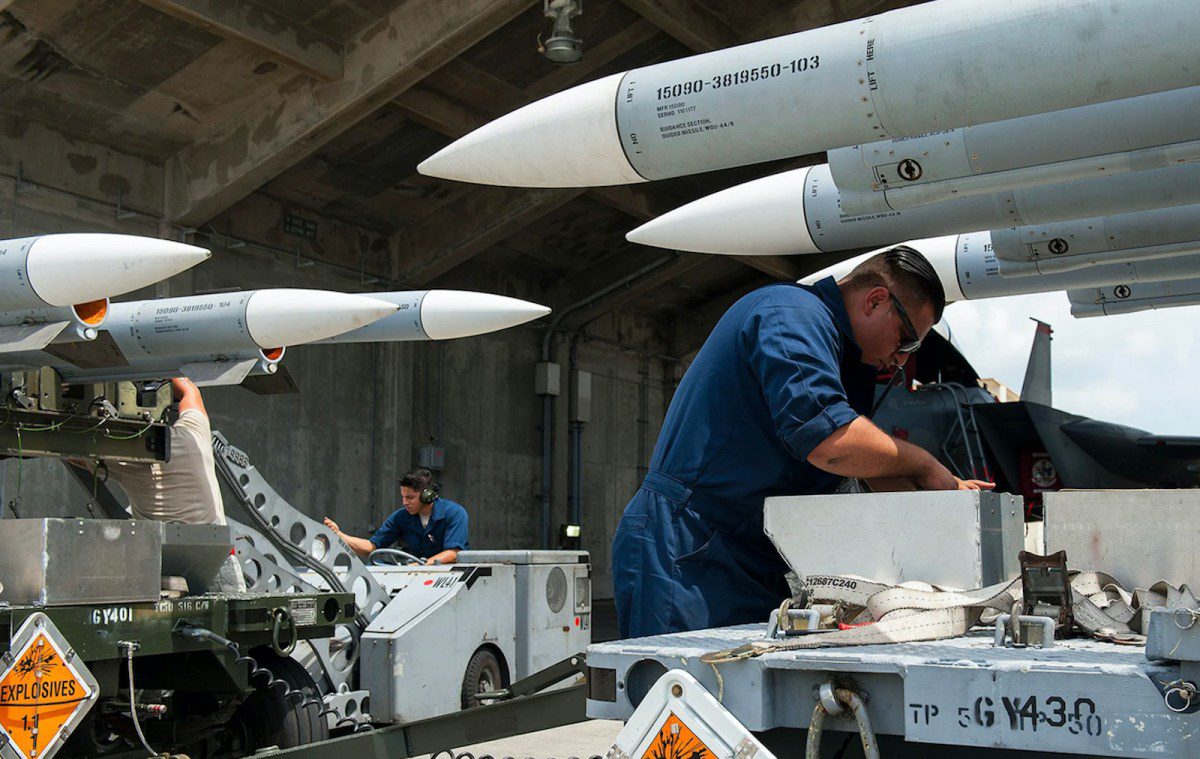Global Courant 2023-05-05 11:57:20
The US plans to ramp up production of its next-generation air-to-air missile beyond visual range (BVR), a weapon it hopes will tip the balance of the air force in the Pacific.
This month, The Warzone reported that the United States Air Force is laying the groundwork for accelerated production of the next generation AIM-260 air-to-air missile to arm its intended Collaborative Combat Aircraft (CCA) fleet of highly autonomous drones specialized for air-to-air combat.
The report notes that plans to ramp up AIM-260 production follow Air Force Chief of Staff General Charles Brown’s testimony before the Senate Armed Forces Committee in response to a question about whether the U.S. Air Force has enough missiles to support its arming CCAs and other manned aircraft. .
Aside from the CCA, The Warzone notes that the upcoming Next Generation Air Dominance (NGAD) fighter and the active duty F-22, F-35, F-15EX II and F/A-18 E/F are among the manned aircraft that will be armed with the AIM-260.
While details on the highly classified AIM-260 are scarce, The Warzone notes in a November 2021 article that it could include a new type of solid-fuel dual-pulse rocket motor to ensure consistent flight performance, a hit-to-kill or omnidirectional warhead, multi-mode guidance systems with active electronically scanned array (AESA) and infrared seekers, and the ability to send guidance signals received from third party sources such as ground radar, other aircraft, drones and satellites.
Accelerated AIM-260 production comes amid reports that the U.S. air-to-air missile arsenal needs to be updated more quickly to keep pace with U.S. combat aircraft technological advances.
For example, Sandboxx notes in a March 2023 article that the F-35 is currently undergoing a massive upgrade in computing power known as Tech Refresh 3, a prelude to the Block IV series of upgrades that will give the F-35 a 75% increase in combat capability.
The report says next-generation US fighters, such as the NGAD and F/A-XX, will need new weapons to fully exploit their capabilities, especially in BVR combat.
In a 2019 article for the International Institute of Strategic Studies, Douglas Barrie notes that the U.S. Air Force can leverage the F-22 and F-35’s low-visibility characteristics with the performance of the AIM-260 to defeat enemy aircraft with presumably longer-range missiles.
Such an approach, says Barrie, is not suitable for older fourth-generation aircraft, such as the F-15 and F-16. Conversely, newer US aircraft such as the NGAD, F/A-XX, F-22 and F-35 may be handicapped by the aging AIM-120 missile, the current US mainstay for BVR combat.
September 2021 article for Air & Space Forces Magazine, John Tirpak notes that while the 30-year-old AIM-120 design has been upgraded over the years, it may have already reached its upgrade potential.
Tirpak also notes that China’s People’s Liberation Army-Air Force (PLA-AF) has already deployed the PL-15 missile, which could outperform the AIM-120.
The USAF’s AIM-120 is apparently inferior to the Chinese PL-15. Image: Illustration
Barry notes in a September 2022 article for IISS that the PL-15’s 200-kilometer range (compared to the 160-180 kilometers of the AIM-120D variant), Mach 5 airspeed, maneuverability, and export potential to U.S. adversaries make it a threat to the U.S. and his allies.
While Barrie notes that the development of the latest AIM-120 variant, the AIM-120D3, was likely driven by the performance of the PL-15, the PL-15 can still win when it comes to delivering a knock-out punch. emissions to enemy aircraft.
Barrie mentions that the AIM-120D3 relies on orbiting to achieve long ranges. That’s been done, the author says, through better software and processing capabilities for more efficient navigation, rather than modifications to the rocket’s rocket engine.
While that technique gives the AIM-120D3 longer range, delivering enough kinetic energy to the target is critical to ensuring a kill.
In addition to not having enough kinetic power to kill enemy fighters outright, the AIM-120 may also be hampered by the limitations of semi-active missile guidance.
Joseph Trevithick notes in a March 2023 article in The Warzone that the AIM-120 should be able to receive pre-launch launch information from the aircraft, with a data link between the missile and the aircraft necessary to guide the former over longer distances while the aircraft’s radar tracks the target.
Trevithick says that on approach to the target, the active radar on board the AIM-120 would turn on, locking and guiding the missile independently of the aircraft’s radar, creating fire-and-forget capabilities.
Dave Majumdar notes in an October 2015 article in The National Interest that AIM-120D missiles integrated into the F-22 may be vulnerable to digital radio frequency memory (DRFM) jammers developed by China and Russia, which can imitate friendly radar signals and return them to the transmitter, rendering semi-active radar missiles be blinded.
Majumdar says this situation has made it necessary for the US to develop new guidance techniques to defeat DRFM jammers, including through the combination of AESA radar and infrared guidance.
An F-22 fires an AIM-120 missile. Photo: Screengrab/Twitter/Military.com
While the introduction of the AIM-260 aims to maintain US air superiority in the Pacific, it is not a high-tech panacea for the significant systemic challenges facing the US Air Force.
Global Courant reported in September 2022 that the US is facing an acute fighter jet shortage and backlog in pilot training, with the US Air Force equipping only 48 of 60 fighter squadrons and only 11 of 13 required squadrons in the Pacific with obsolete aircraft averaging 28.8 years old.
In addition, pilot training in the US has declined since the 1991 Gulf War, with pilots now getting just 9.7 flying hours per month, down from 22.3 hours back then. Those numbers are far less than the 137 modernized, well-trained and well-equipped fighter squadrons that were intended to deter any rational adversary from engaging in a dogfight with the US.
Similar:
Loading…




